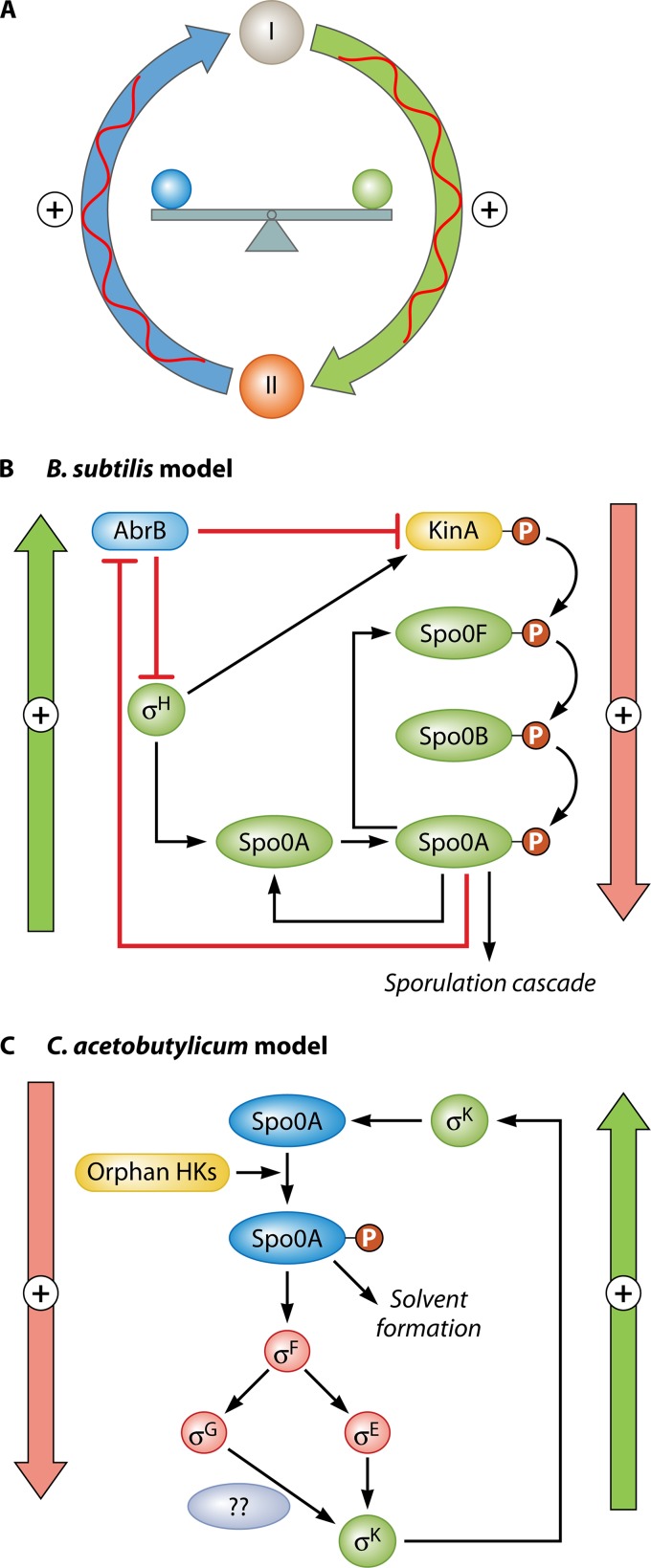FIG 7.
The concept of bistable phenotypes, the basis of bistability (sporulate versus do not sporulate in B. subtilis), and the proposed basis for bistable phenotypes in C. acetobutylicum. (A) The three key elements that lead to bistable phenotypes: a positive feedback circuit with embedded nonlinearities (shown by the red twisting lines) and a good balance in the two arms of the circuit. (B) These key requirements are present in the B. subtilis model of sporulation: on the right, it is the “down” positive but highly nonlinear control of Spo0A phosphorylation through the phosphorylation relay, and on the left, there are several “up” positive feedback circuits, with two resulting from the direct transcriptional stimulation of spo0A and spo0F by activated (phosphorylated) Spo0A. Two other loops are derived from the transcriptional stimulation of kinA expression by phosphorylated Spo0A via two negative feedback loops involving AbrB and σH. Additional such positive feedback loops exist in the B. subtilis model. (C) Cartoon displaying the two feedback loops from Spo0A to σK, which we propose are the basis for the observed bistable phenotypes in C. acetobutylicum, as discussed in the text.

